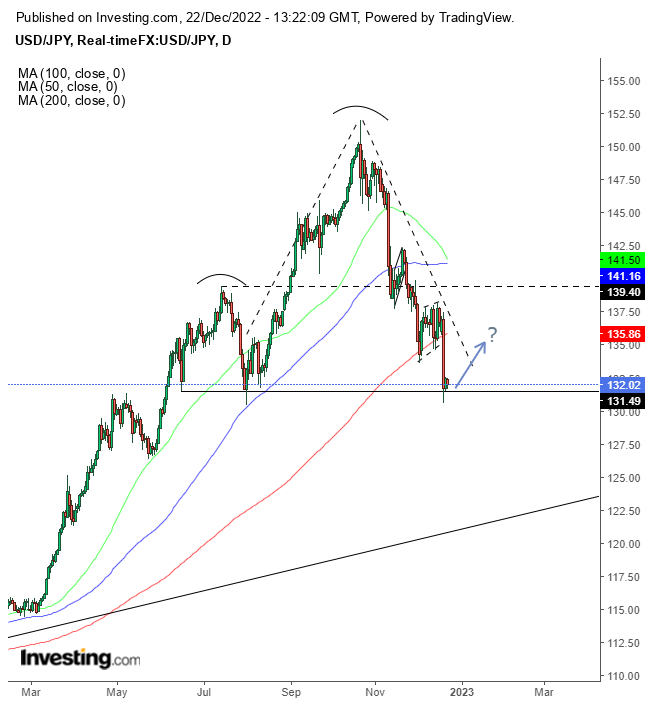- The Japanese yen has depreciated against the U.S. dollar, causing negative effects in the Asian country
- Interest rate gap and other factors contributed to depreciation
- Goldman Sachs analysts believe there is still room for the dollar to rise against the yen
The Japanese yen has seen a significant decline against the U.S. dollar this year, with the USD/JPY pair reaching a high of 150 in October this year before settling back to around 132.
This depreciation has had adverse effects on Japan's households and businesses, including an increased financial burden and lower wages relative to the U.S. dollar, as well as exacerbating labor shortages in the country.
The main factor behind the depreciation is the gap in interest rates between Japan and the U.S., with the U.S. Federal Reserve tightening financial conditions and the Bank of Japan refusing to take the same path. However, other factors are also at play, including Japan's reliance on imports for energy and food, the increasing costs of those imports, and the deterioration of Japanese industry's competitiveness compared to American and European businesses.
In response to this situation, the Bank of Japan (BoJ) recently widened the trading band for 10-year Japanese government bonds (JGBs), causing the U.S. dollar value to drop sharply against the yen. However, the dollar recovered the following day.
Goldman Sachs analysts believe there is still room for the dollar to rise against the yen but are closing their long dollar/yen position due to the possibility of a more significant BOJ policy change. Goldman Sachs assumes that the BOJ's move was a technical adjustment and a sign that policy rates could be adjusted further in the coming months.
There is also a discrepancy between the Federal Reserve's (Fed) projections for future interest rates and what financial markets expect. The Fed's median forecast, as shown in the dot plot, is for interest rates to be 5.125%, 4.125%, and 3.125% in 2023, 2024, and 2025, respectively. However, market expectations are lower, at 3.818%, 2.651%, and 2.49% for those respective years.
This divergence in expectations could potentially lead to volatility in the future, as only one side will ultimately be proven correct.
The USD/JPY completed a rising flag on Nov. 23, a changing of the guard period between early bears locking in profits and latecomers. The continuation pattern achieved its implied target by Tuesday's plunge.
Before the plunge, another possible rising flag, marked by the 200 DMA, indicates another leg down. My only issue with the second flag is that it doesn't follow a flagpole, a sharp drop that prompts bears to cash out.
Either way, these moves completed creating the head of a potential H&S top. All that remains is the right shoulder, then a selloff below the neckline connecting the lows, situated above 130.
This level's bullish stronghold could push prices up again, which would also fit the return move that follows a flag's breakout. That doesn't necessitate a downside breakout, completing a top.
This technical uncertainty reflects the divergent outlook described above.
Trading Strategies
Conservative traders should wait for a new high to go along with the extending uptrend or wait for the H&S to complete with a downside breakout below 128.50, then for a return move to confirm the neckline's resistance for a short position.
Moderate traders would short the rebound, then join moderate peers with a short
Aggressive traders could go long now, buying into the bounce.
Trade Sample 1 - Aggressive Long
- Entry: 131.00
- Stop-Loss: 130.00
- Risk: 100 pips
- Target: 134.00
- Reward: 300 pips
- Risk-Reward Ratio: 1:3
Trade Sample 2 - Moderate Short
- Entry: 135.00
- Stop-Loss: 136.00
- Risk: 100 pips
- Target: 132.00
- Reward: 300 pips
- Risk-Reward Ratio: 1:3
Disclosure: The author does not own any of the securities mentioned in this article.


